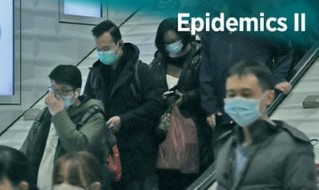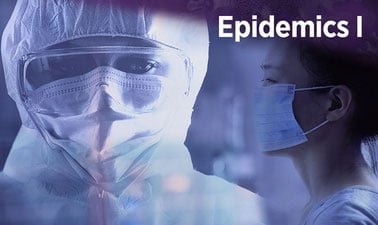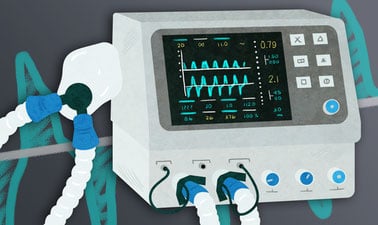Epidemics II
Learn the basic concepts of infectious disease epidemiology, evidence synthesis, and disease modeling in this comprehensive course. Understand the impact of pathogens, hosts, and the environment on disease transmission. Gain insights into the evolution of pathogens and the effects of age and sexual mixing on disease severity. Explore uncertainty in modeling and the importance of epidemic curves. With a supplementary module on COVID-19, this course provides valuable knowledge for public health professionals.
What you will learn
- Basic Concepts in Infectious Disease Epidemiology
- Epidemiologic Triangle: The Pathogen, The Host and The Environment
- Evidence Synthesis
- Infectious Disease Modelling
- ?????????
- ????????: ?????????
- ????
- ?????
- Epidemic Curve
- Timescale of Disease Transmission
- The Pathogen: Evolution (Case1: Myxoma Virus)
- The Pathogen: Evolution (Case 2: Human Immunodeficiency Virus)
- The Pathogen: Evolution (Case 3: Antimicrobial Resistance)
- The Host: How Age Affects Disease Transmission and Severity
- The Host: Sexual Mixing
- The Environment
- Uncertainty in Modeling (Dynamic Uncertainty, Parametric Uncertainty)
- Uncertainty in Modeling (Structural Uncertainty, Scenario Uncertainty)
- ???????
- ???????
- ?????????1???????
- ?????????2??????????
- ?????????3????????
- ??????????????????
- ??????
- ??
- ??????????????????????
- ??????????????????????
- Basic Concepts in Infectious Disease Epidemiology
- Epidemic Curve
- What is Incubation Period and Use of Incubation Period
- Transmissibility of Communicable Diseases
- Timescale of Disease Transmission
- What is Severity of Infectious Disease
- Difficulties Associated with Severity Estimation
- Epidemiologic Triangle
- The Pathogen: The Effects of Dose and Pathogen Genetics
- The Pathogen: Evolution (Case1: Myxoma Virus)
- The Pathogen: Evolution (Case 2: Human Immunodeficiency Virus)
- The Pathogen: Evolution (Case 3: Antimicrobial Resistance)
- The Host: Overview
- The Host: How Age Affects Disease Transmission and Severity
- The Host: Sexual Mixing
- The Environment
- Supplementary Module: Influenza Immunity and Transmission In Time, Age and Space
- Infectious Disease Modelling (Susceptible Infectious Removed Model)
- Evidence Synthesis
- Uncertainty in Modeling (Dynamic Uncertainty, Parametric Uncertainty)
- Uncertainty in Modeling (Structural Uncertainty, Scenario Uncertainty)
- Supplementary Module: Precision Public Health
Program Overview
With supplementary module on COVID-19
Including our study results, final size estimation for superspreading clusters, the Chinese experience for global preparedness, and more.
?If history is our guide, we can assume that the battle between the intellect and will of the human species and the extraordinary adaptability of microbes will be never-ending.? (1)
Despite all the remarkable technological breakthroughs that we have made over the past few decades, the threat from infectious diseases has significantly accelerated. In this course, we will learn why this is the case by looking at the fundamental scientific principles underlying epidemics and the public health actions behind their prevention and control in the 21st century.
This is the second (spread of infectious diseases) of the four courses, covers these topics:
Basic Concepts in Infectious Disease Epidemiology
Epidemiologic Triangle: The Pathogen, The Host and The Environment
Evidence Synthesis
Infectious Disease Modelling
??????????????????????????????????????????????????(1)
???????????????????????????????????????????????????????????????????????????????????????????
????????????????????
?????????
????????: ?????????
????
?????
—————————————————————————————————————————————
(1) Fauci AS, Touchette NA, Folkers GK. Emerging Infectious Diseases: a 10-Year Perspective from the National Institute of Allergy and Infectious Diseases. Emerg Infect Dis 2005 Apr; 11(4):519-25.







There are no reviews yet.